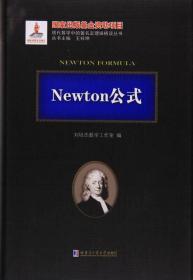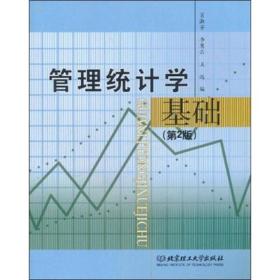
培养数学能力的途径(第2版英文)
正版 培养数学能力的途径 第2版
¥ 15.2 4.0折 ¥ 38 全新
库存4件
北京房山
认证卖家担保交易快速发货售后保障
作者[美]大卫·索贝奇(David Sobecki) 著
出版社哈尔滨工业大学出版社
出版时间2019-07
版次1
装帧平装
货号E
上书时间2024-11-10
- 在售商品 暂无
- 平均发货时间 15小时
- 好评率 暂无
- 店主推荐
- 最新上架
商品详情
- 品相描述:全新
- 正版库存书 非二手
- 商品描述
- E34-05
图书标准信息
- 作者 [美]大卫·索贝奇(David Sobecki) 著
- 出版社 哈尔滨工业大学出版社
- 出版时间 2019-07
- 版次 1
- ISBN 9787560383033
- 定价 38.00元
- 装帧 平装
- 开本 16开
- 纸张 胶版纸
- 页数 636页
- 【内容简介】
-
《培养数学能力的途径(第2版 英文)》既可以当作教材使用,也可以当作大众读物来阅读,它一定会赢得广大中产阶级的喜爱,因为他们酷爱“学习”,有人曾经批判性地将这样的文化消费态度视为“中产阶层的文化苦旅”:物质主义导致文化疲惫,导致文化卑微,解码不易导致文化焦虑,脱域机制导致文化震惊。
于是中产阶层在阅读消费上便发展出了这样一种妥协的艺术:通过“大师”的解读来看懂经典名作,通过极尽逼真的印刷工艺来欣赏世界名画,没有游历四方的物质基础就把外面的世界“搬回家”,无法接触商界精英便解读他们的思维方式——图书成为社会较高阶层文化消费的替代品与简化载体,阅读消费成为中产阶层模仿“位高者”的捷径与妥协选择,
《培养数学能力的途径(第2版 英文)》是为配合哈尔滨工业大学百年校庆和“双**”建设活动而引发的,目前在社会层面,大众对于大学与大学教育诟病很多,一是大学耗费了纳税人的巨额税款,并没有贡献出入们所期待的思想、观念、成果,二是行政化倾向愈演愈烈,在此背景下大学出版社应该有所作为。 - 【作者简介】
-
Dave Sobecki,I was born and raised in Cleveland, and started college at Bowling Green State University majoring in creative writing. Eleven years later, I walked across the graduation stage to receive a PhD in math, a strange journey indeed. After two years at Franklin and Marshall College in Pennsylvania,I came home to Ohio, accepting a tenure-track job at the Hamilton campus of Miami University.I've won a number of teaching awards in my career, and while maintaining an active teachingschedule, I now spend an inordinate amount of time writing textbooks and course materials. I've written or co-authored either nine or sixteen textbooks, depending on how you count them, as well as a wide variety of solutions manuals andinteractive CD-ROMS.I've also worked on an awfullot of the digital content that accompanies my texts, including Connect, LearnSmart, and Instructional videos.
I'm in a very happy place right now: my love of teaching meshes perfectly with my childhood dream of writing. (Don't tell my publisher this-they think I spend 20 hours a day working on textbooks-but I'm working on my first novel in the limited spare time that I have.) I'm also a former coordinator of Ohio Project NExT, as I believe very strongly in helping young college instructors focus on high-quality teaching as a primary career goal. Ilive in Fairfield, Ohio, with my lovely wife Cat and fuzzy dogs Macleod and Tessa. I'm a recovering sports fan,still rooting for Ohio State and the Cleveland teams in a saner manner. Other passions include heavy metal music, travel, golf,collecting fine art, and visiting local breweries.
Brian Mercer,I can say without a doubt that I was made to be in a classroom. I followed the footsteps of my father,a 35-year middle school math teaching veteran, into this challenging yet rewarding career. My college experience began as a community college student at Lakeland College in Mattoon, Illinois.From there, I received a Bachelor of Science in Mathematics from Eastern Illinois University and a Master of Science in Mathematics from Southern Illinois University. I accepted a tenure-track faculty position at Parkland College, where I have taught developmental and college-level courses for 20 years. I had the opportunity to begin writing textbooks shortly after I started teaching at Parkland. My then department chair and mentor, James W. Hall, and I co-authored several text-books in Beginning and Intermediate Algebra.
In the fall of 2011, our department began discussing the idea of creating two tracks through our developmental math sequence. The idea stemmed from two issues. First, most of our beginning and intermediate algebra students were headed to either our Liberal Arts Math or our Introduction to Statistics course. Second, we wanted to enhance intermediate algebra to better prepare those students who were headed to college algebra. Obviously, these were two competing ideas ! Increasing the algebraic rigor of these courses seemed to "punish"students who were not heading to college algebra. With the two track system, we implemented a solution that best serves both groups of students.
I have to admit that I was initially concerned that offering an alternate path through developmental math for students not planning to take college algebra would lead to a lowering of standards. However, my participation in our committee inves-tigating this idea led me to believe it was possible to offer a rigorous course that was exceedingly more appropriate for this group of students. Since there were no materials for the course, I began creating my own and was paired by McGraw-Hill with Dave Sobecki. The successful partnership that resulted has led to two editions of this book, along with follow-up projects in Quantitative Reasoning and Quantitative Literacy. My thoughts on all three of these projects are summed up by a comment from a trusted colleague who said, "This is just a long overdue idea."
Outside of the classroom and away from the computer, I am kept educated, entertained and ever-busy by my wonderful wife Nikki, and our two children, Charlotte, 10 and Jake, 9. I am an avid St. Louis Cardinals fan and enjoy playing recreational softball and golfin the summertime with colleagues and friends. - 【目录】
-
Unit 1: NUMERIC DATA: VISUALIZE AND ORGANIZE
Lesson 1-1 Where Does the Time Go?
1.Analyze personal time management for a week of activities.
2.Solve problems involving percentages.
3.Create and interpret pie charts.
4.Create and interpret bar graphs.
Lesson 1-2 Do You Have Anything To Add?
1.Identify circumstances where addition or subtraction is possible.
2.Add or subtract quantities.
Lesson 1-3 It's About Accumulation
1.Interpret multiplication as repeated addition.
2.Multiply or divide quantities.
Lesson 1-4 Avoiding Empty Pockets
1.Distinguish between simple interest and compound interest.
2.Distinguish between linear and exponential growth.
3.Interpret exponents as repeated multiplication.
4.Simplify numeric expressions involving exponents and the order of operations.
Lesson 1-5 A Coordinated Effort
1.Use a rectangular coordinate system.
2.Connect data to graphs.
3.Interpret graphs.
Lesson 1-6 What are the Chances?
1.Compute and interpret basic probabilities.
2.Translate a probability to a percent chance.
3.Recognize the difference between theoretical and empirical probability.
Lesson 1-7 Debt: Bad.Chocolate: Good
1.Convert numbers between decimal and scientific notation.
2.Describe the signifIcance of writing numbers in scientific notation.
Lesson 1-8 What's Your Type?
1.Analyze how your personality type affects how you interact with others.
2.Create and interpret Venn diagrams.
3.Describe sets using appropriate terminology.
Lesson 1-9 News in the Data Age .
1.Explain the difference between a population and a sample.
2.Organize data with frequency distributions and histograms.
3.Analyze data with stem and leaf plots.
……
Unit 2: MAKING SENSE OF IT ALL
Unit 3: THINKING LINEARLY
Unit 4: LIVING IN A NONLINEAR WORLD
点击展开
点击收起
相关推荐
— 没有更多了 —






























以下为对购买帮助不大的评价